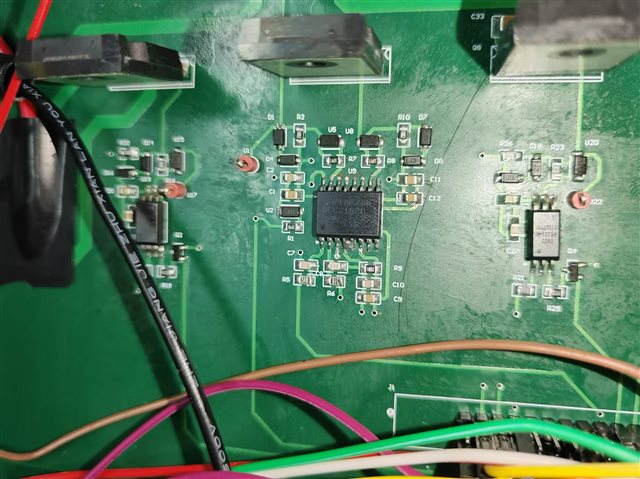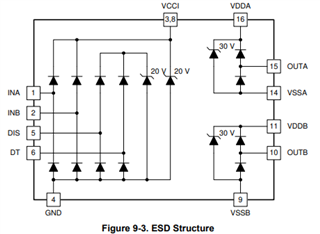Tool/software:
I am a student of power electronics. When testing the driver chip UCC21520, I found that as long as the power supply pin VDDA on the output side is powered, there is no signal on the input side. The output OUTA is a high level, the amplitude is the same as the power supply, and changes with the power supply voltage, but OUTB is not affected, I measured the VDDA and OUTA with the on-off switch of the multimeter, and found that there is no short circuit, so what is the situation? How to solve it? (INA low level, INB high level, resulting in OUTA signal, OUTB no signal, of course, OUTA amplitude is still the same as VDDA)



 This is my schematic and physical PCB
This is my schematic and physical PCB